Information injection-pump assembly
BOSCH
9 400 618 975
9400618975
ZEXEL
107691-3580
1076913580
HINO
220402451B
220402451b
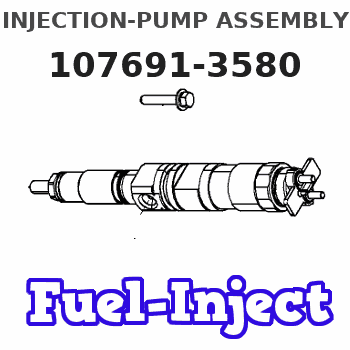
Rating:
Service parts 107691-3580 INJECTION-PUMP ASSEMBLY:
1.
_
7.
COUPLING PLATE
9.
_
11.
Nozzle and Holder
23600-3222B
12.
Open Pre:MPa(Kqf/cm2)
17.7{180}/21.6{220}
14.
NOZZLE
Include in #1:
107691-3580
as INJECTION-PUMP ASSEMBLY
Cross reference number
BOSCH
9 400 618 975
9400618975
ZEXEL
107691-3580
1076913580
HINO
220402451B
220402451b
Zexel num
Bosch num
Firm num
Name
107691-3580
9 400 618 975
220402451B HINO
INJECTION-PUMP ASSEMBLY
J08C-UK K 14CG INJECTION PUMP ASSY TICS MD-TI6 TICS
J08C-UK K 14CG INJECTION PUMP ASSY TICS MD-TI6 TICS
107691-3580
9 400 618 975
S220402451 HINO
INJECTION-PUMP ASSEMBLY
J08C-UK A K 14CG INJECTION PUMP ASSY TICS MD-TI6 TICS
J08C-UK A K 14CG INJECTION PUMP ASSY TICS MD-TI6 TICS
107691-3580
9 400 618 975
S220402451B HINO
INJECTION-PUMP ASSEMBLY
J08C-UK B K 14CG INJECTION PUMP ASSY TICS MD-TI6 TICS
J08C-UK B K 14CG INJECTION PUMP ASSY TICS MD-TI6 TICS
Calibration Data:
Adjustment conditions
Test oil
1404 Test oil ISO4113 or {SAEJ967d}
1404 Test oil ISO4113 or {SAEJ967d}
Test oil temperature
degC
40
40
45
Nozzle and nozzle holder
105780-8250
Bosch type code
1 688 901 101
Nozzle
105780-0120
Bosch type code
1 688 901 990
Nozzle holder
105780-2190
Opening pressure
MPa
20.7
Opening pressure
kgf/cm2
211
Injection pipe
Outer diameter - inner diameter - length (mm) mm 8-3-600
Outer diameter - inner diameter - length (mm) mm 8-3-600
Overflow valve
131425-0920
Overflow valve opening pressure
kPa
255
221
289
Overflow valve opening pressure
kgf/cm2
2.6
2.25
2.95
Tester oil delivery pressure
kPa
255
255
255
Tester oil delivery pressure
kgf/cm2
2.6
2.6
2.6
RED4 control unit part number
407915-0
590
RED4 rack sensor specifications
mm
19
PS/ACT control unit part no.
407980-2
24*
Digi switch no.
17
Direction of rotation (viewed from drive side)
Left L
Left L
Injection timing adjustment
Direction of rotation (viewed from drive side)
Left L
Left L
Injection order
1-4-2-6-
3-5
Pre-stroke
mm
5.1
5.07
5.13
Beginning of injection position
Governor side NO.1
Governor side NO.1
Difference between angles 1
Cal 1-4 deg. 60 59.75 60.25
Cal 1-4 deg. 60 59.75 60.25
Difference between angles 2
Cyl.1-2 deg. 120 119.75 120.25
Cyl.1-2 deg. 120 119.75 120.25
Difference between angles 3
Cal 1-6 deg. 180 179.75 180.25
Cal 1-6 deg. 180 179.75 180.25
Difference between angles 4
Cal 1-3 deg. 240 239.75 240.25
Cal 1-3 deg. 240 239.75 240.25
Difference between angles 5
Cal 1-5 deg. 300 299.75 300.25
Cal 1-5 deg. 300 299.75 300.25
Injection quantity adjustment
Rack position
(11.8)
PWM
%
54.5
Pump speed
r/min
750
750
750
Average injection quantity
mm3/st.
123.5
121.5
125.5
Max. variation between cylinders
%
0
-3.5
3.5
Basic
*
PS407980-224*
V
2.25+-0.
01
PS407980-224*
mm
3.1+-0.0
5
Injection quantity adjustment_02
Rack position
(6.8)
PWM
%
26.3+-2.
8
Pump speed
r/min
440
440
440
Each cylinder's injection qty
mm3/st.
11
9.9
12.1
PS407980-224*
V
V1+0.05+
-0.01
PS407980-224*
mm
5+-0.03
Remarks
Refer to items regarding the pre-stroke actuator
Refer to items regarding the pre-stroke actuator
Governor adjustment
Pump speed
r/min
1220--
Advance angle
deg.
0
0
0
Remarks
Start
Start
Governor adjustment_02
Pump speed
r/min
1170
Advance angle
deg.
0
0
0
Remarks
Pointer stamping position
Pointer stamping position
Governor adjustment_03
Pump speed
r/min
1170
Advance angle
deg.
0
-0.3
0
Governor adjustment_04
Pump speed
r/min
1320-50
Advance angle
deg.
-1.5
-1.8
-1.2
Remarks
Finish
Finish
0000001201
CU407980-224*
*
Actuator advancing type
*
Supply voltage
V
24
23.5
24.5
Ambient temperature
degC
23
18
28
Pre-stroke
mm
2
1.95
2.05
Output voltage
V
2.83
2.82
2.84
Adjustment
*
_02
CU407980-224*
*
Supply voltage
V
24
23.5
24.5
Ambient temperature
degC
23
18
28
Pre-stroke
mm
5.1
5.07
5.13
Output voltage
V
1.2
1
1.4
Confirmation
*
Remarks
Output voltage V1
Output voltage V1
_03
CU407980-224*
*
Supply voltage
V
24
23.5
24.5
Ambient temperature
degC
23
18
28
Output voltage
V
3.05
3.05
Confirmation of operating range
*
Test data Ex:
Speed control lever angle
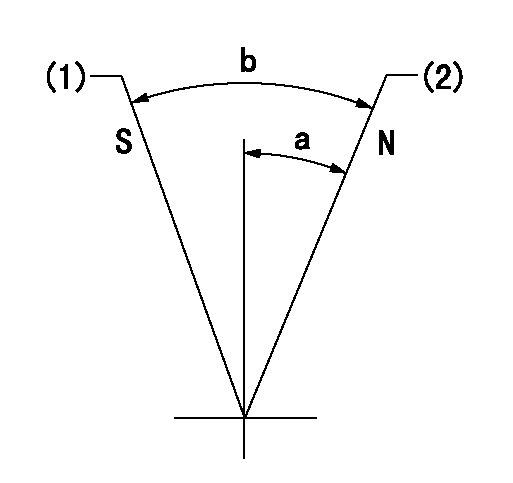
N:Pump normal
S:Stop the pump.
(1)Rack position = aa
(2)Rack position bb
----------
aa=1mm bb=20mm
----------
a=18.5deg+-5deg b=37deg+-5deg
----------
aa=1mm bb=20mm
----------
a=18.5deg+-5deg b=37deg+-5deg
0000000901

(1)Pump vertical direction
(2)Coupling's key groove position at No 1 cylinder's beginning of injection
(3)B.T.D.C.: aa
(4)Pre-stroke: bb
----------
aa=3deg bb=5.1+-0.03mm
----------
a=(20deg)
----------
aa=3deg bb=5.1+-0.03mm
----------
a=(20deg)
Stop lever angle
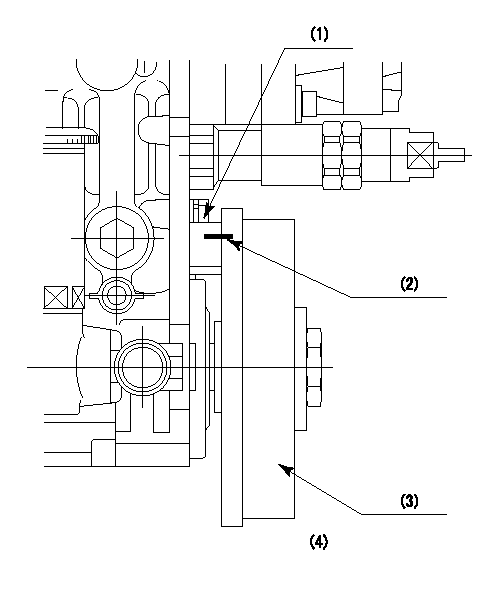
(1)Pointer
(2)Injection timing aligning mark
(3)Fly weight
(4)The actual shape and direction may be different from this illustration.
Operation sequence
1. Turn the prestroke actuator OFF.
2. Turn the camshaft as far as the No.1 cylinder's beginning of injection position.
3. Check that the pointer alignment mark of the injection pump and the alignment mark of the flywheel are matching.
4. If they are not matching, erase the alignment mark on the flywheel side, and stamp an alignment mark on the flywheel position that matches with the pointer side alignment mark.
5. Check again that the coupling's key groove position is in the No.1 cylinder's beginning of injection position.
----------
----------
----------
----------
0000001301
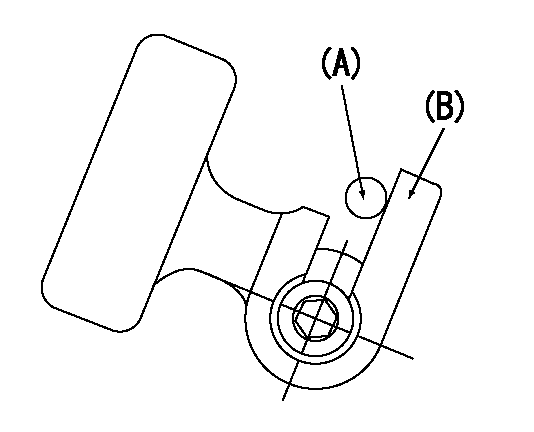
A : Stopper pin
B: Connector
----------
----------
----------
----------
0000001401
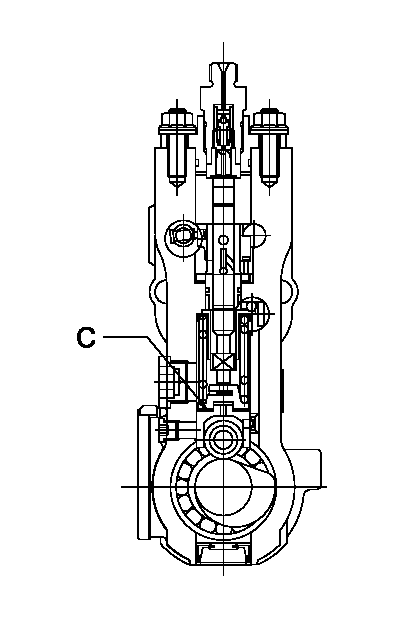
C:Shim
----------
----------
----------
----------
0000001501
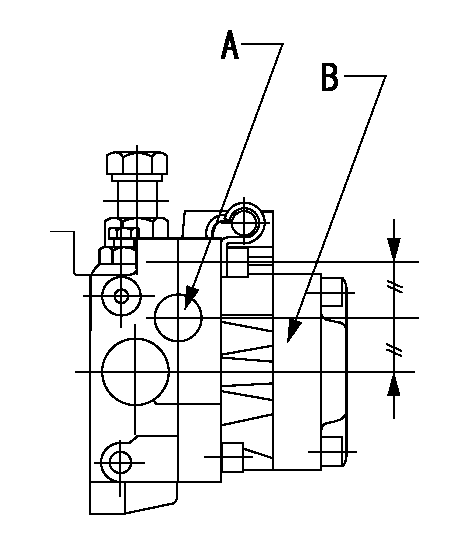
A:Sealing position
B:Pre-stroke actuator
1. When installing the pre-stroke actuator on the pump, first tighten the installation bolts loosely, then move the actuator fully clockwise (viewed from the drive side).
Temporary tightening torque: 1 - 1.5 N.m (0.1 - 0.15 kgf.m)
2. Move the actuator in the counterclockwise direction when viewed from the drive side, and adjust so that it becomes the adjustment point of the adjustment value. Then tighten it.
Tightening torque: 7^9 N.m (0.7^0.9 kgf.m)
3. After prestroke actuator installation adjustment, simultaneously stamp both the actuator side and housing side.
----------
----------
----------
----------
0000001701

(PWM) Pulse width modulation (%)
(R) Rack position (mm)
Rack sensor output characteristics
1. Rack limit adjustment
(1)Measure the rack position R2 for PWM a2%.
(2)Confirm that it is within the range R2 = 15+-1 mm.
(3)Measure the rack position R1 at PWM a %.
(4)Confirm that it is within the range R2 - R1 = 10+-0.1 mm.
2. Check the limp home operation.
(1)Move the switch box's limp home switch to the limp home side.
(2)Confirm rack position L1 (mm ) and L2 (mm) for PWM in the above table.
3. Check the pull down operation.
(1)Confirm that the rack position is 19 mm at PWM B%.
(2)In the conditions described in the above table, move the switch box's pull down switch to the pull down side and confirm that the rack position momentarily becomes 1 mm or less.
----------
a1=16.25% a2=72.5% L1=1--mm L2=19++mm A=5 % B=95%
----------
----------
a1=16.25% a2=72.5% L1=1--mm L2=19++mm A=5 % B=95%
----------
Information:
Loose Belt(s)
Loose fan or water pump belts will cause a reduction in air or water flow. Tighten the belts according to V-Belt Tension Chart that is shown in Specification section of this Service Manual.Bad Hose(s)
Bad hoses with leaks can normally be seen. Hoses that have no visual leaks can "collapse" (pull together) during operation and cause a restriction in the flow of coolant. Hoses become soft and/or get cracks after a period of time. Hoses must be changed after 50,000 miles or a year of use. The inside can become loose, and the loose particles of the hose can cause a restriction in the flow of coolant.Shunt Line Restriction
A restriction of the shunt line from the radiator top tank to the engine front cover, or a shunt line not installed correctly, will cause a reduction in water pump efficiency. The result will be low coolant flow and overheating.Shutters Not Opening Correctly
Check the opening temperature of the shutters. The shutters must be completely closed at a temperature below the fully open temperature of the water temperature regulators. Also, verify that fan control switches or viscous fans are operating correctly.Bad Water Temperature Regulators
A regulator that does not open, or only opens part of the way, can cause above normal heating. To test the thermostats, see the Testing and Adjusting section of this Service Manual.Bad Water Pump
A water pump with a loose impeller does not pump enough coolant for correct engine cooling. A loose impeller can be found by removing the water pump, and by pushing the shaft back and pulling it forward. If the impeller has no damage, check the impeller clearance. The clearance between the impeller and the housing is 0.56 to 1.50 mm (.022 to .059 in).Air in Cooling System
Air can get into the cooling system in different ways. The most common causes are not filling the cooling system correctly, and combustion gas leaking into the system. Combustion gas can get into the system through inside cracks or bad cylinder head gaskets. Air in the cooling system causes a reduction in coolant flow and bubbles in the coolant. Air bubbles hold coolant away from engine parts, preventing heat flow.Air in the cooling system can be found by the Bottle Test. The equipment needed to make this test is a one pint bottle, a bucket of water, and a hose which will fit the end of the overflow pipe of the radiator.Before testing, make sure the cooling system is filled correctly. Use a wire to hold the relief valve in the radiator cap open. Install the radiator cap and tighten it. Put the hose over the end of the overflow pipe.Start the engine and operate it at high idle rpm for a minimum of five minutes after the engine is at normal operating temperature. Use a cover on the radiator core to keep the engine at operating temperature. After five or more minutes at operating temperature, place the loose end of the hose in the bottle filled with water.
Loose fan or water pump belts will cause a reduction in air or water flow. Tighten the belts according to V-Belt Tension Chart that is shown in Specification section of this Service Manual.Bad Hose(s)
Bad hoses with leaks can normally be seen. Hoses that have no visual leaks can "collapse" (pull together) during operation and cause a restriction in the flow of coolant. Hoses become soft and/or get cracks after a period of time. Hoses must be changed after 50,000 miles or a year of use. The inside can become loose, and the loose particles of the hose can cause a restriction in the flow of coolant.Shunt Line Restriction
A restriction of the shunt line from the radiator top tank to the engine front cover, or a shunt line not installed correctly, will cause a reduction in water pump efficiency. The result will be low coolant flow and overheating.Shutters Not Opening Correctly
Check the opening temperature of the shutters. The shutters must be completely closed at a temperature below the fully open temperature of the water temperature regulators. Also, verify that fan control switches or viscous fans are operating correctly.Bad Water Temperature Regulators
A regulator that does not open, or only opens part of the way, can cause above normal heating. To test the thermostats, see the Testing and Adjusting section of this Service Manual.Bad Water Pump
A water pump with a loose impeller does not pump enough coolant for correct engine cooling. A loose impeller can be found by removing the water pump, and by pushing the shaft back and pulling it forward. If the impeller has no damage, check the impeller clearance. The clearance between the impeller and the housing is 0.56 to 1.50 mm (.022 to .059 in).Air in Cooling System
Air can get into the cooling system in different ways. The most common causes are not filling the cooling system correctly, and combustion gas leaking into the system. Combustion gas can get into the system through inside cracks or bad cylinder head gaskets. Air in the cooling system causes a reduction in coolant flow and bubbles in the coolant. Air bubbles hold coolant away from engine parts, preventing heat flow.Air in the cooling system can be found by the Bottle Test. The equipment needed to make this test is a one pint bottle, a bucket of water, and a hose which will fit the end of the overflow pipe of the radiator.Before testing, make sure the cooling system is filled correctly. Use a wire to hold the relief valve in the radiator cap open. Install the radiator cap and tighten it. Put the hose over the end of the overflow pipe.Start the engine and operate it at high idle rpm for a minimum of five minutes after the engine is at normal operating temperature. Use a cover on the radiator core to keep the engine at operating temperature. After five or more minutes at operating temperature, place the loose end of the hose in the bottle filled with water.
Have questions with 107691-3580?
Group cross 107691-3580 ZEXEL
Hino
107691-3580
9 400 618 975
220402451B
INJECTION-PUMP ASSEMBLY
J08C-UK
J08C-UK
107691-3580
9 400 618 975
S220402451
INJECTION-PUMP ASSEMBLY
J08C-UK
J08C-UK
107691-3580
9 400 618 975
S220402451B
INJECTION-PUMP ASSEMBLY
J08C-UK
J08C-UK